Simple, fast, complete, and powerful are the 4 words that best sum up the C4. Developed by DIGIdot, it is a complete control system for your LED systems controlled by an SPI protocol but also any luminaire or element controllable by DMX, Art-Net, or sACN.
Boasting an impressive range of features, the C4 is much more than just a controller, with each module capable of controlling up to 2,720 RGB LEDs or 2,040 RGBW LEDs. But, above all, it can be entirely autonomous, particularly for controlling channels and/or reproducing an entire show.
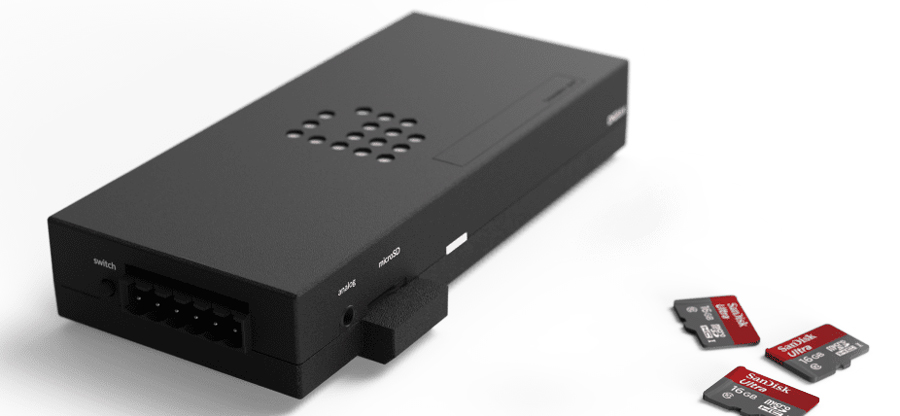
It was enough to arouse our interest and help us discover how a 140-gram box/case in Live or Extended version can change the way you work.
Le Boîtier
All the power of the C4 is in a box that is 15.3×7.4×2.8 cm whether for the Live or Extended version and it is easy to mount it on a DIN rail or attach it to a board or shelf. For connectivity, we of course find the power socket, two RJ45 connectors, an analog input (jack), a slot for a micro SD card, and a terminal block for connecting the inputs and outputs of the SPI and/or DMX signals. Just to the left of this last element, a programmable button can, for example, be used to trigger a show or a lighting state.
We see that the design has been carefully thought out; one side of the case has no connector or LED, it can be placed on the side or rear of the rack to leave the opposite side, where the status indicator LED is located, visible. As the C4 is rated only IP10, it is advisable to be careful where you place it.
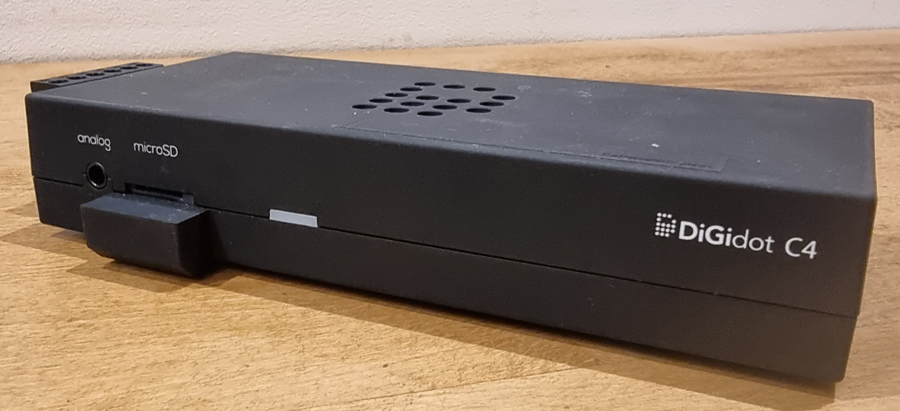
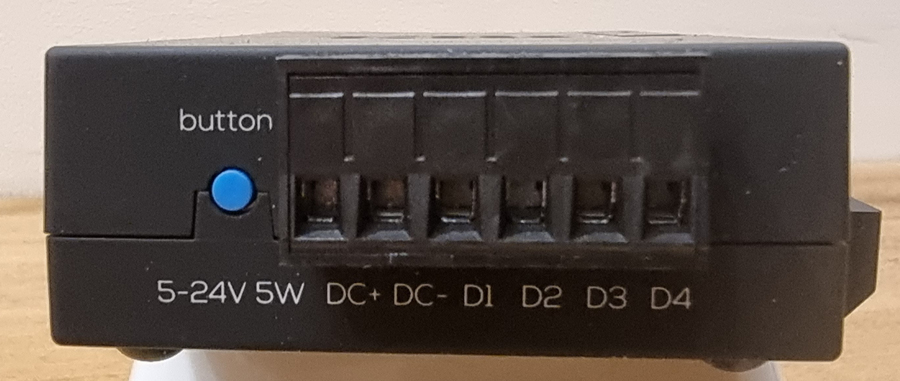
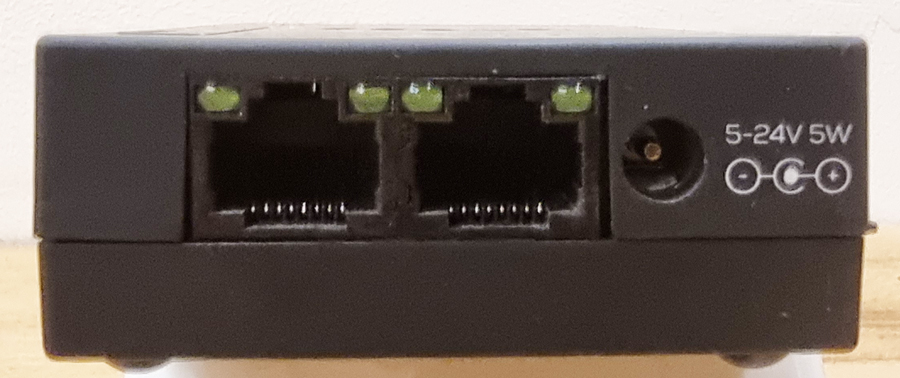
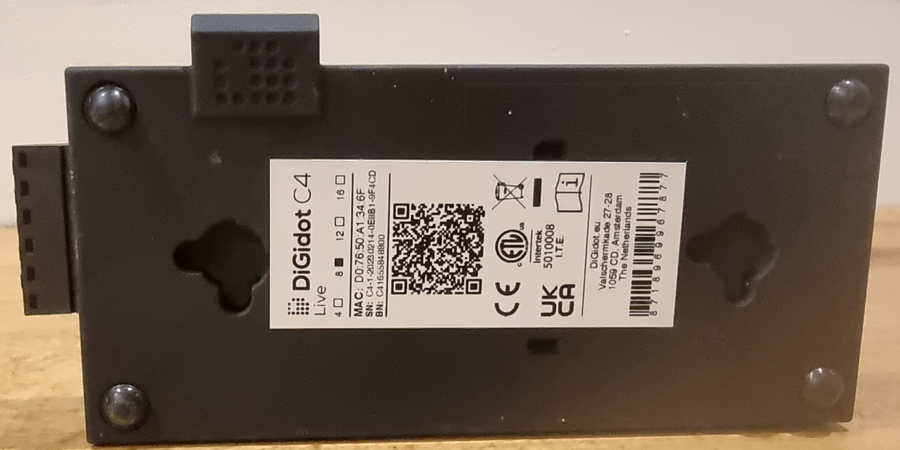
To best adapt to the needs of your budget, DIGIdot offers the choice of the number of universes available. Each module of the Live version can have 4, 8, 14, 16, and now even 24 universes. As for the Extended version, it reserves 1, 2, 4, or 8 universes for your use. We can already clearly see the different uses targeted by the two versions.
One of the great assets of this product is its flexibility which is found in all the functionalities. Just for the inputs and outputs, there are 4 compatible protocols: Art-Net, sACN, DMX, and SPI
It also has up to 9 input/output possibilities:
- Art-Net/sACN input to 4 SPI outputs
- Art-Net/sACN input to 2 SPI outputs and 1 DMX output
- Art-Net/sACN input to 2 DMX outputs
- Art-Net/sACN input to 4 DMX outputs
- 2 DMX inputs + Art-Net/sACN to Art-Net output
- 1 DMX input to 2 SPI outputs
- 1 DMX input (Trigger) to 1 DMX output (Extended version only)
- 2 DMX inputs to Art-Net output, or record (Extended version only)
- 1 DMX input (Trigger) to 2 SPI outputs (Extended only only)
Video presentation N°1
It is also important to note that the C4 is compatible with 63 SPI / IC protocols. The fact that we can output both SPI and DMX allows the C4 to be used as an Art-Net / SPI interface and at the same time as Art-Net / DMX. This solution has the advantage of removing one or more nodes. The C4 has 4 outputs, while many other products only have 2, we can define 4 points that make up its strength and its differences: the network, the interface, programming, and restitution (show playback).
The Network
Compatible with network protocols such as Art-Net and sACN, the C4 is also and above all a node, and not a simple interface. This allows it to integrate into a network and be a part of the system, or even control the system. This is a very important point since it can control and modify all parameters remotely and at any time. There are two ways to connect to the C4, either via a wired network or via a WIFI connection. For the latter solution, you must activate the parameter and select the “Access Point” option.
For the wired network option, it is recommended to enter an address type 10.0.0.X to be compatible with Art-Net, sACN, and C4 control. Then simply enter the address of the Box in your web browser to access these parameters or, even better, by using the address 10.255.255.255 you can, via the interface, access all the C4 modules connected to the network. Once this address has been validated, the interface opens like a website page.
The Interface
Video presentation N°2
The web interface via an IP address is not new, but the one developed by DIGIdot simplifies many tasks and adds a large number of tools and possibilities to the C4 Extended version. Note that when you use an address like X.254.254.254 in the browser, in the center of the blue bar you can choose to work on all the nodes or select the one on which you want to make modifications. In the main area of the page, there are buttons grouping categories of options or functions.
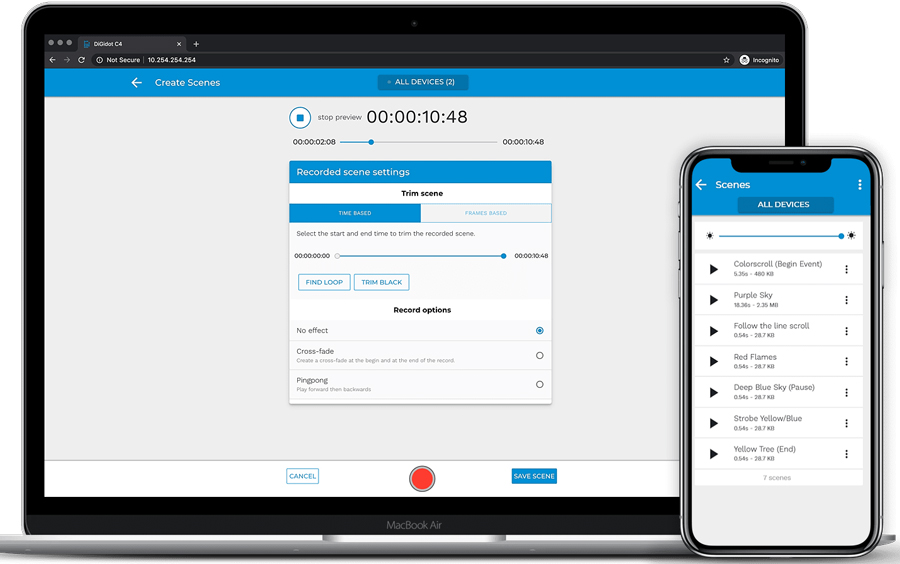
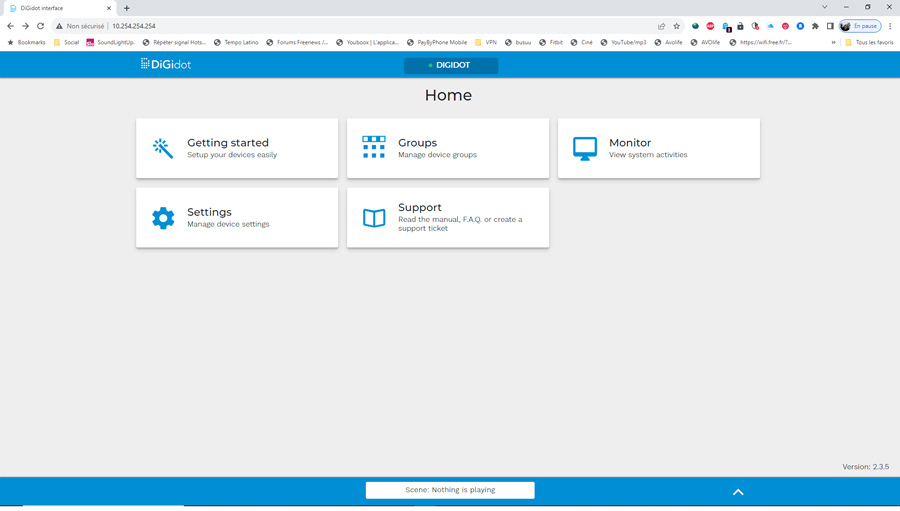
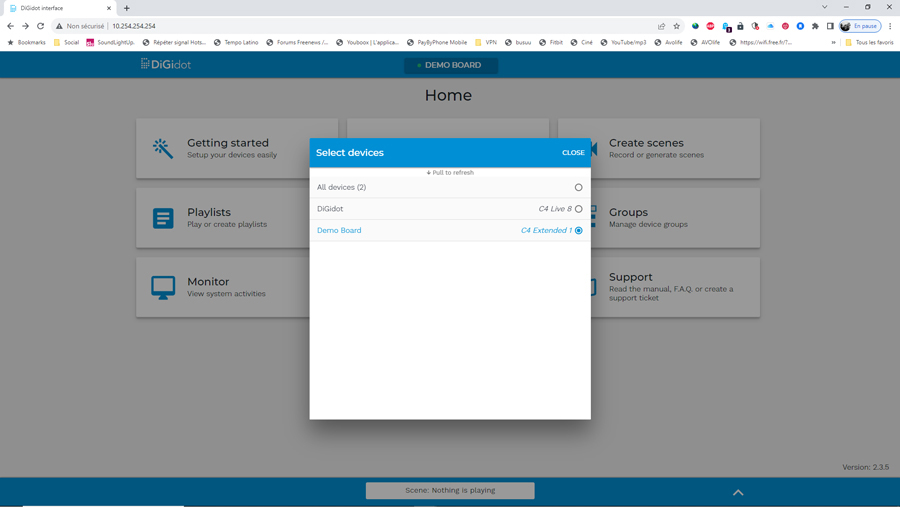
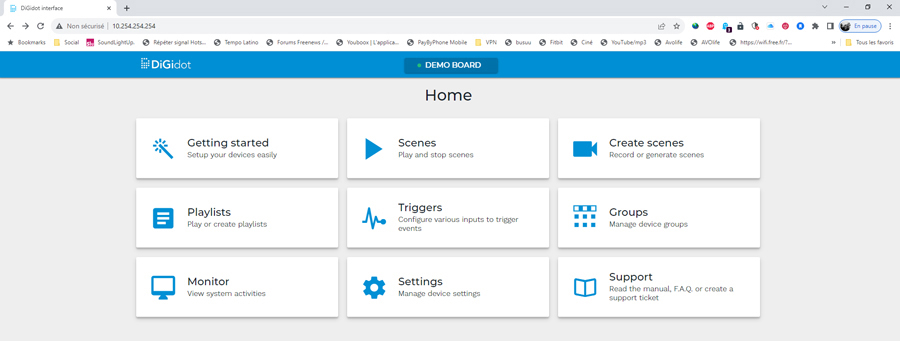
If you have both C4s in Live and Extended versions, you have 5 menus for the first and 9 for the second. For functions common to both versions, the first button allows quick configuration of one or more nodes. You can also make or modify the settings via the different menus of the “Settings” button.
It is also in this window that we configure the wifi, and detect devices via the RDM. We can also check the proper “running” of the functions of each node, control the backups, the interface, and updates.
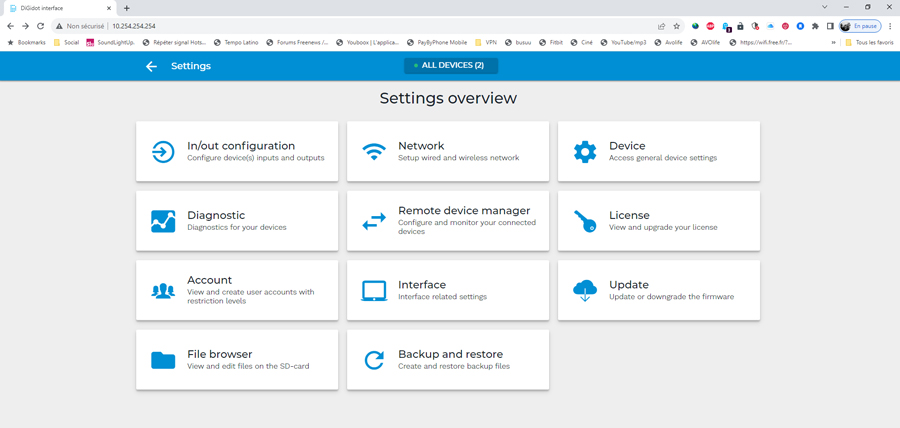
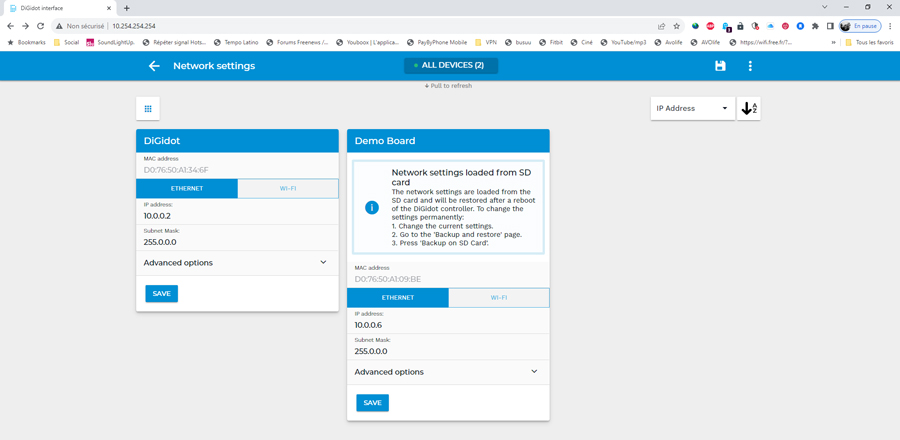
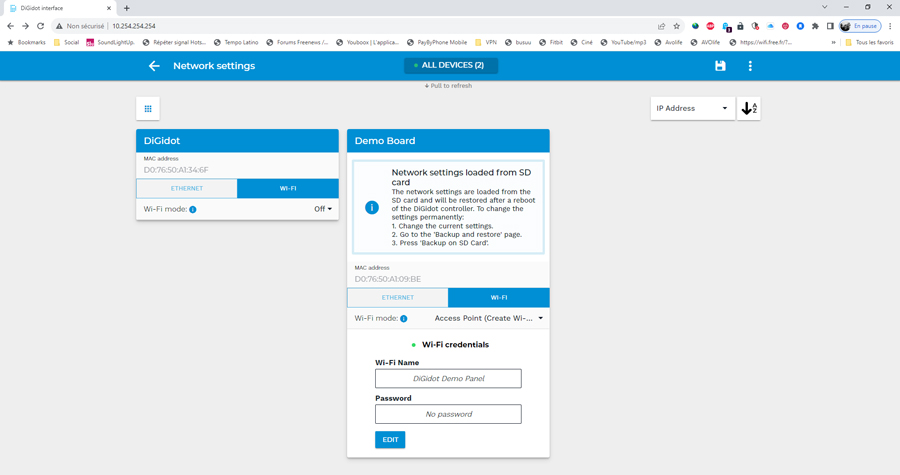
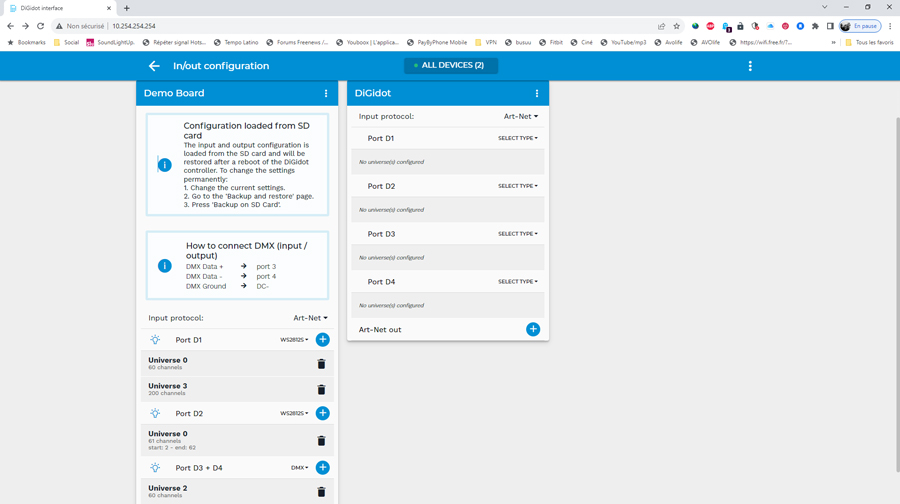
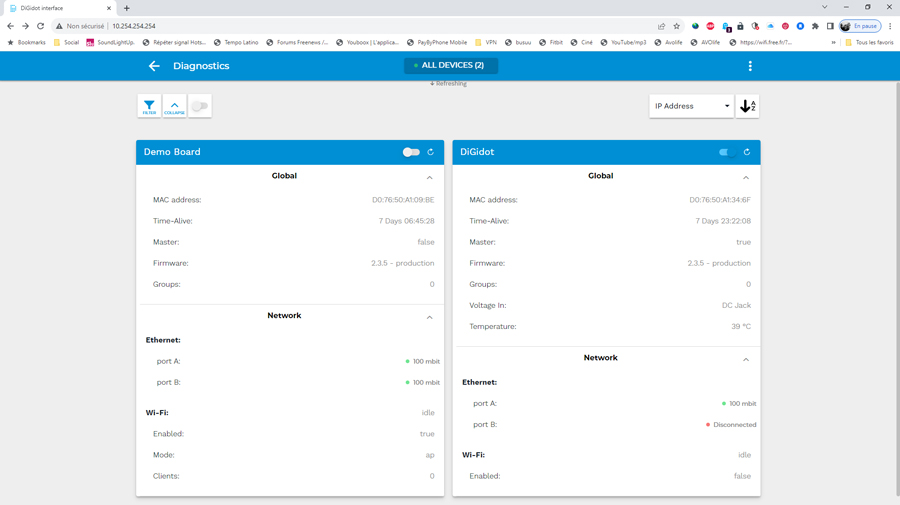
In the “Monitor” window of the main menu, we have an overview of the status of the functions, certain values and some very practical functions such as switching between the sources connected to the node. A “Group” function allows you to link the configuration, identification, test, restart functions of several nodes to facilitate the management of your projects.

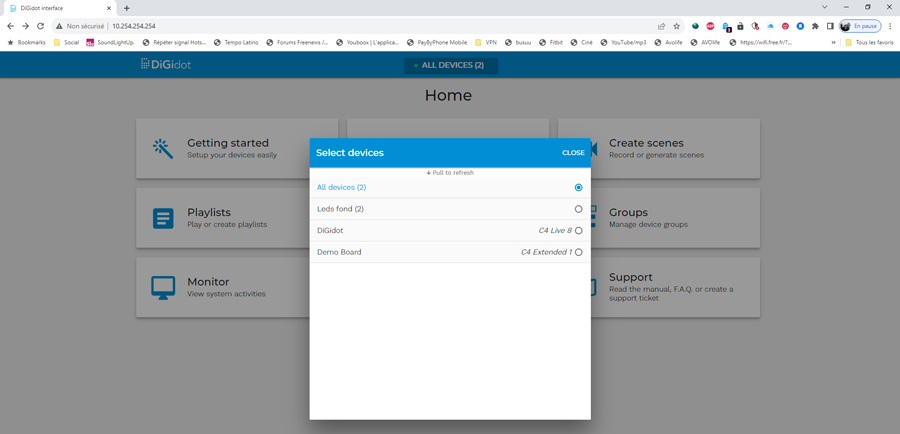
It’s the Extended version that reveals all the power of the C4! It adds the possibility of reproducing one or more shows and even includes programming tools!
Playback
There are two tools for Playback: Scenes and Playlists.
A scene is a luminous, static, or animated state that can be played back one by one from the Scene page. A Playlist will be created to play the Scenes in a certain order, with fade times and manual or automated transitions.
It is also possible to trigger Scenes or Playlists via external Triggers. This can be via a button, a “fader”, a motion detector but also a value, or a range of values sent by a DMX, ArtNet, or sACN channel. The small button on the C4 Box can be used as a Trigger.

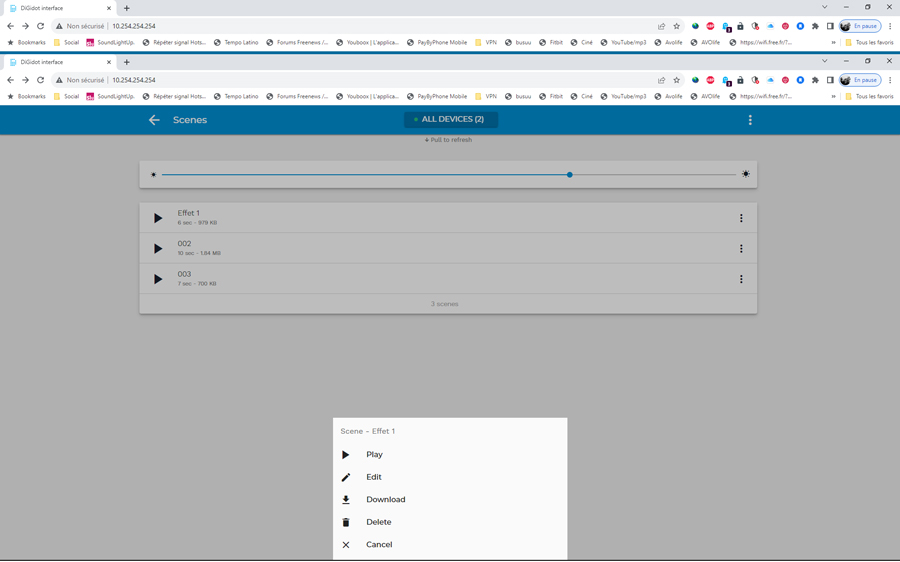
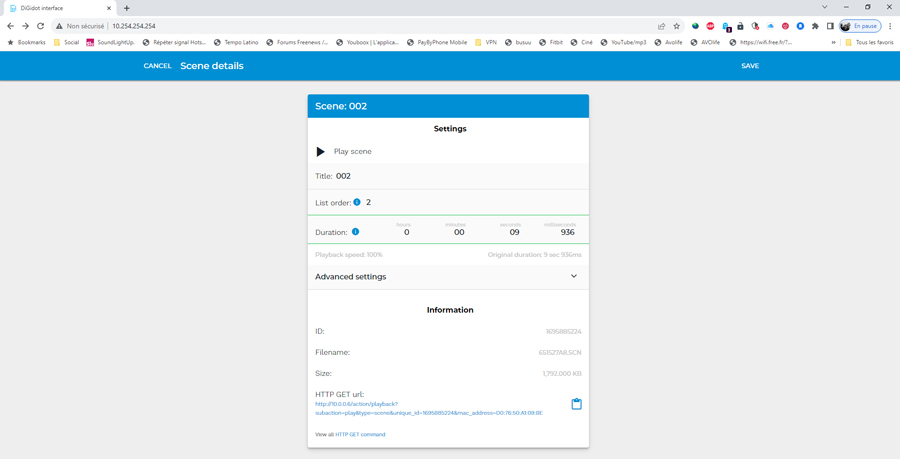

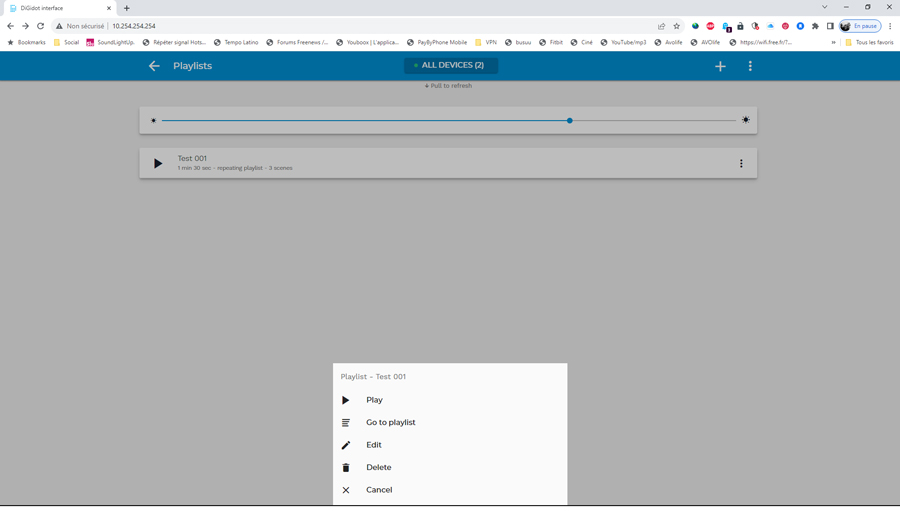
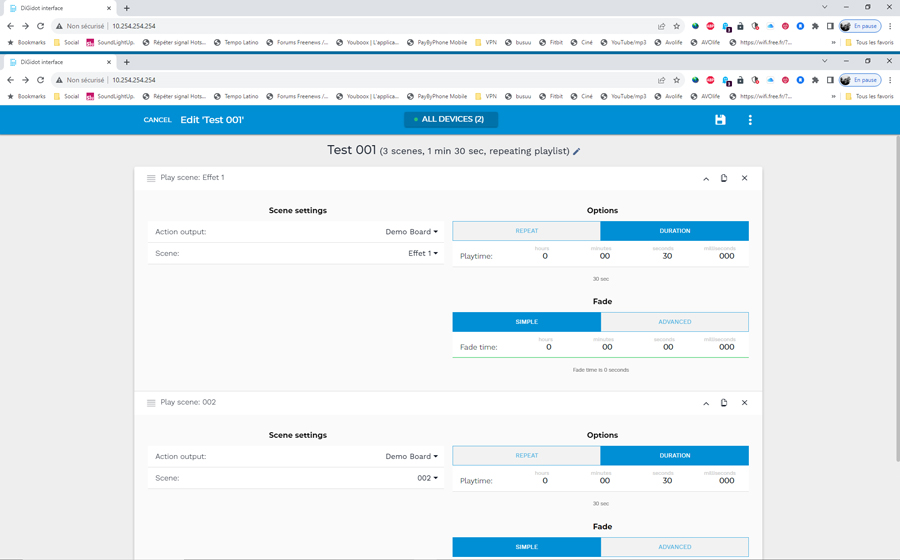
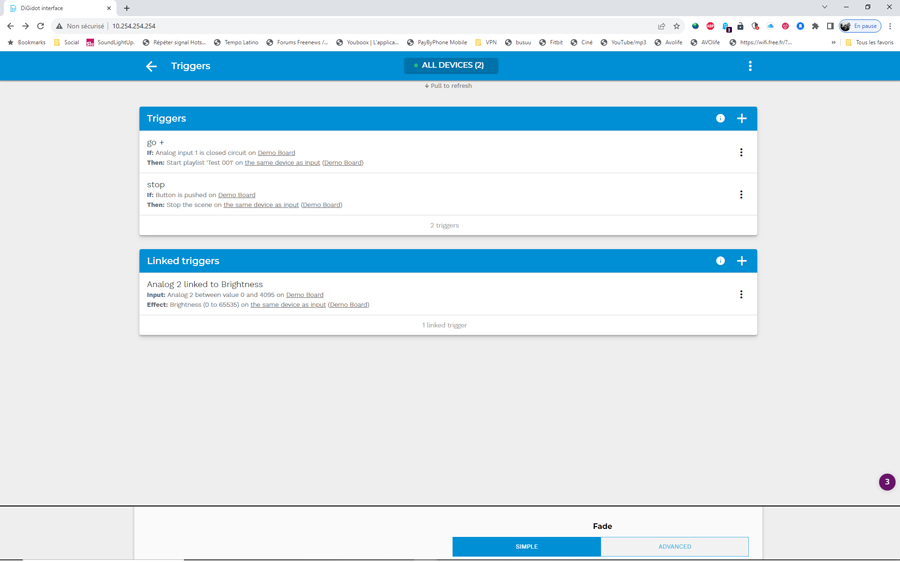
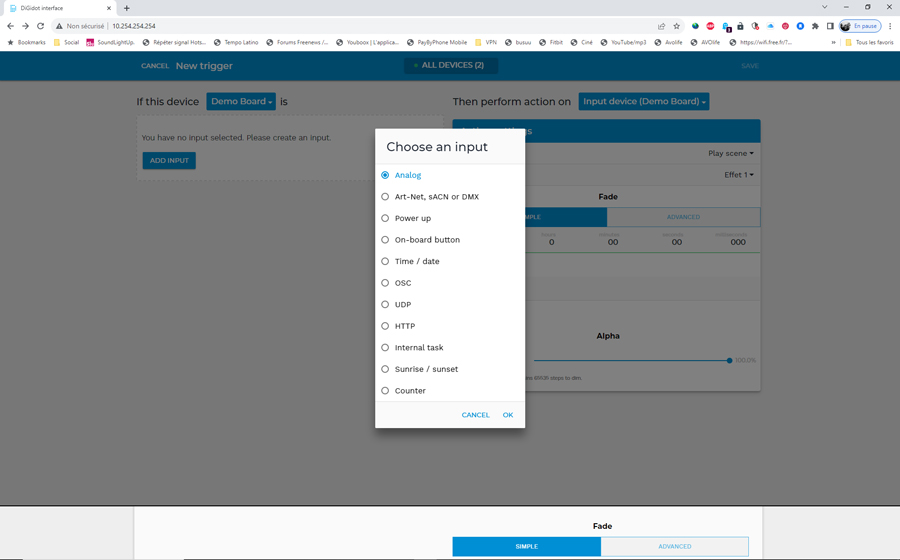
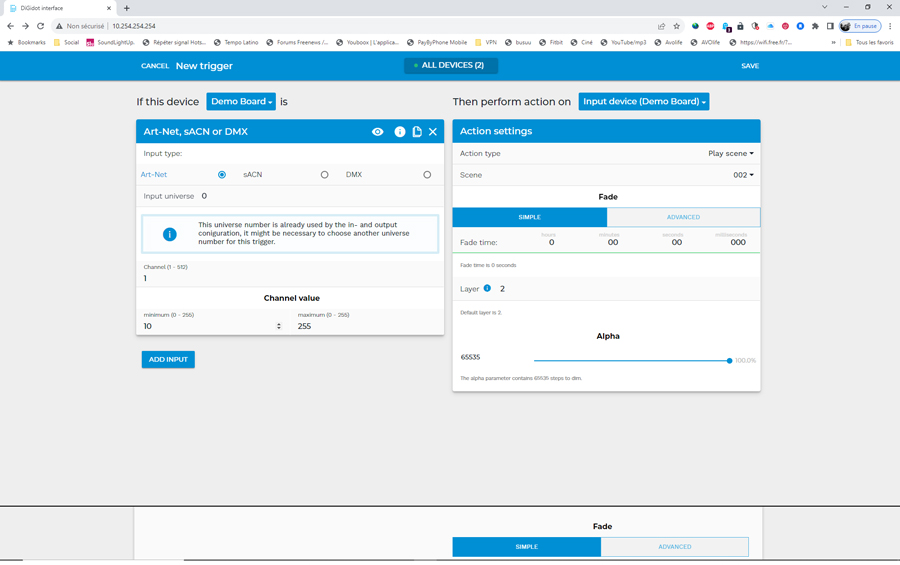
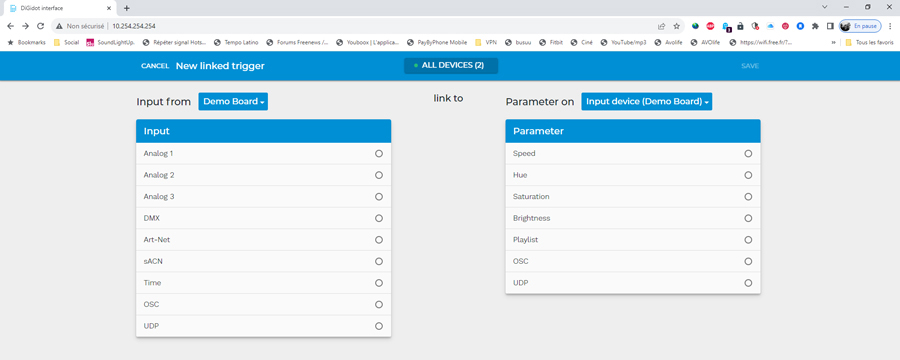
Programming
Video presentation N°3
The last function, but not least, is scene programming. The “Generate Scene” tool allows you to create a Static Scene or a sequence of colors. If you use this function you will necessarily need a C4 Extended to reproduce the Scene.
This tool is currently quite basic and should surely evolve in future updates, even if the goal is not to replace a controller but to have a practical tool for basic programming.
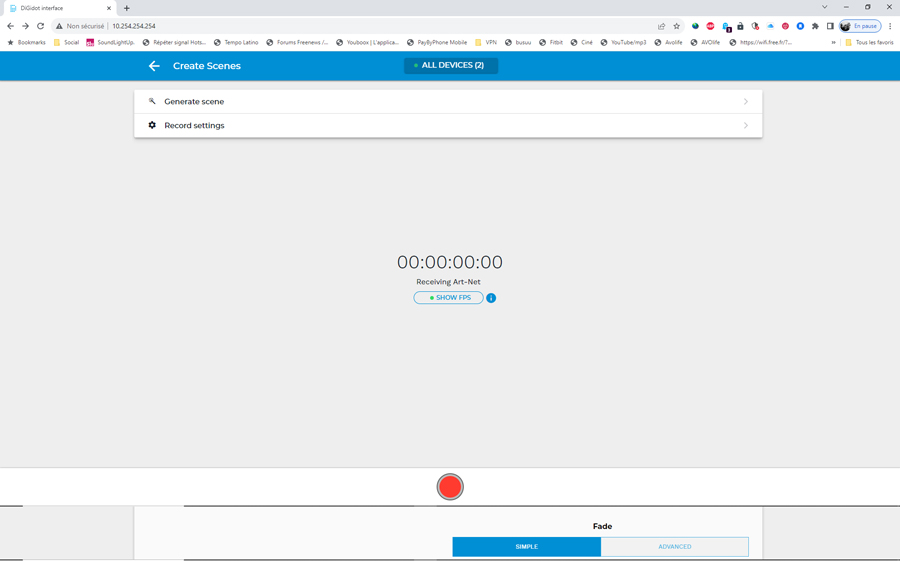

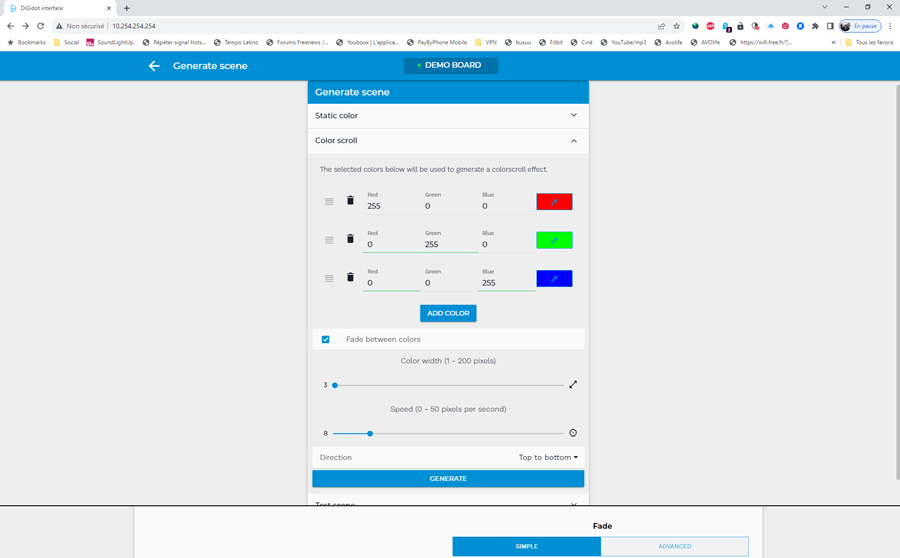

For more complex lighting states, you must go through an external controller, a light console, a media server, or even both. It is then possible to record the Art-Net, sACN, or DMX values to create a Scene. This is where, for me, is where its not a cherry on top of the cake but the whole bowl of cherries!
Once the values have been captured, there is a function to create a loop. To do this, you must capture enough values so that the programmed sequence is played at least once in its entirety. The software will then inspect all recorded values until it finds two sequences of identical values. It will then generate a loop between these two points.
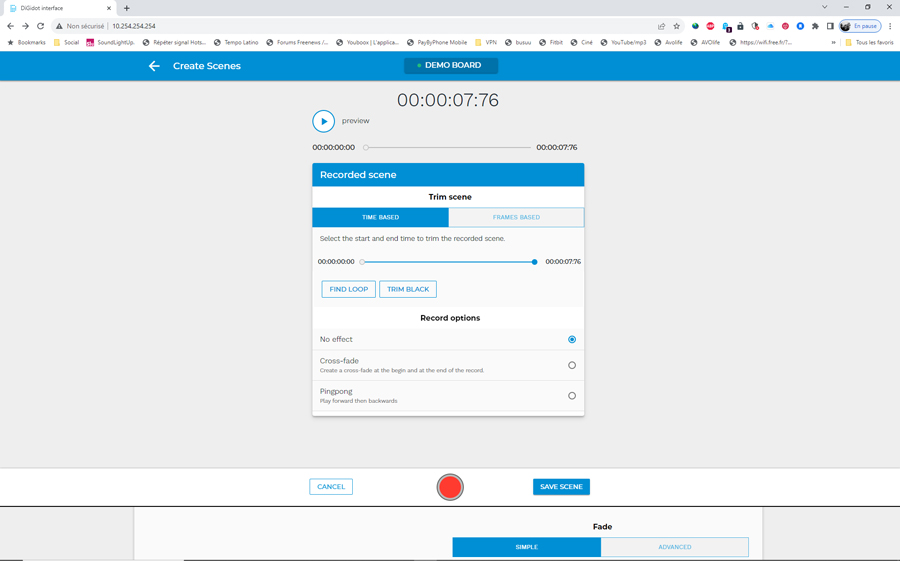

Conclusion
The C4 is a real Swiss army knife! DIGIdot has designed a node that can be useful in almost any situation. We are very far from a simple node allowing you to control LED pixels using SPI protocol. The C4 is a powerful and complete toolbox that can be an interface between a DMX, Art-Net, or sACN controller and any lighting kit including SPI, DMX, Art-Net, or sACN sources as well as a show controller.
Despite the impressive amount of features, DIGIdot has managed to develop a simple and clear interface with very intuitive handling. The success is no longer in doubt and a PxLNet Node version has been developed for large-scale projects such as the Turkish Airlines Lounge or the Italian pavilion at EXPO 2020 in Dubai.
It fits into a 19″ rack and has 16 PxLNet outputs (remote up to 250 m), and 96 universes to control up to 16,320 LEDs. The C4 is a tool that you need to know and always keep in the back of your mind because it can simplify many points on a mobile or permanent installation. LedBox Company will be happy to show you the extent of its possibilities on its premises or by traveling to the location (on-site) to be equipped.
 We like:
We like:
- The number of different protocols available
- The wide variety of tools with the interface
- The user-friendly aspect
 On regrette :
On regrette :
- I am still looking for some flaws…








